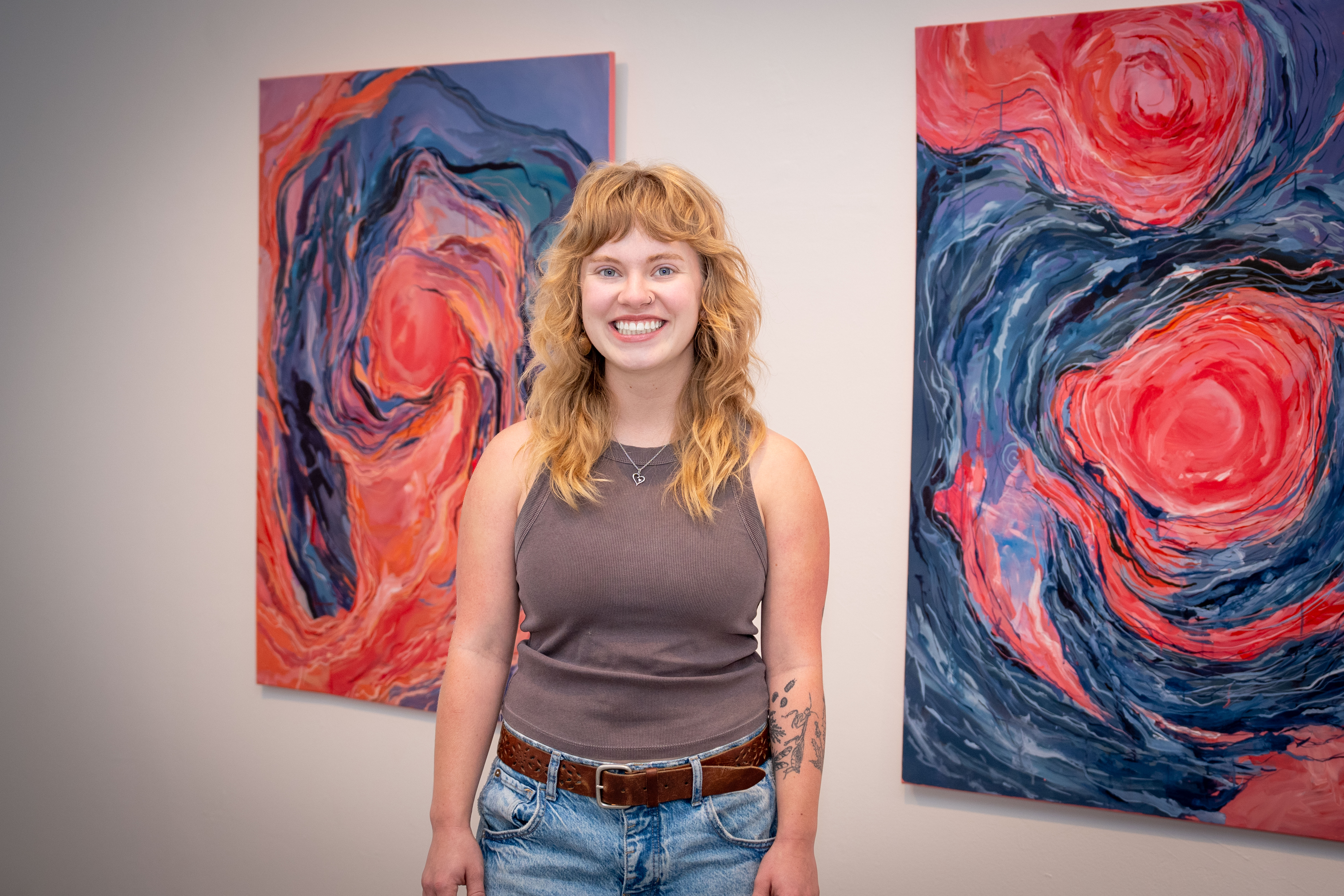SILVER CITY, NM—When Western New Mexico University alum Charlee Alexander was in high school, she expected that college would lead her to a career as a dentist or orthodontist. Instead, she is graduating this May with a Bachelor of Fine Arts degree.
Her career direction changed when the COVID-19 pandemic began. “When I realized that I wanted to pursue art, it was because COVID had happened, and it shook me,” she explained.
“I was really into impressionism in high school,” she explained. “I think that what really drew me into that was how you could see the individual brush strokes. I was really fascinated by all the impressionists, and I was really into doing plein air landscape painting. That is what I would do every day during COVID. I would go out and paint the fields in Texas. That is how I realized that I wanted to do art for real.”
That conviction was confirmed as she began her studies at WNMU and discovered a passion for abstraction. “When I came here, I had a really great drawing and painting instructor my freshman year, and she gave me some awesome technical skills to fall back on,” said Alexander. “I started to enter into the world of abstract painting. She opened me up to that and encouraged me to do a big abstract painting. It was the first time I had done something big and the first time I had done something non-representational. I was immediately hooked. It felt like I had discovered a whole new language.”
This discovery felt revolutionary to Alexander. “It was interesting for me to discover abstract painting because up until then words and images were the only things I knew how to communicate with,” she said. “So being able to be poetic in this abstract way kind of blew my mind, and it was just so fun to explore.”
It also allowed her to gain greater insight into herself and to be able to communicate her thoughts and emotions.
Alexander explained: “I really believe that when you make a mark with paint and a brush on canvas, it captures that exact moment when the mark was made, and it translates the emotions and thoughts that were present in that exact moment. I consider each mark to be a specimen of the moment.”
“When those moments layer together,” she continued, “they make what I call mindscapes, which are visual representations of a mental landscape. I started to use this personal language that I had discovered to create images of what I think the inside of my brain looks like.”
Alexander’s exploration of this new language and her favored color palette, especially her use of red, allowed her to explore questions about gender that were unexpected, she said. “Red is a really interesting color to paint with because once you start adding white to it, it becomes pink, and that holds a lot of connotations that I did not necessarily expect to be working with,” she explained. “That mirrors a lot of things I was working through with myself and my own femininity and expression and wrestling with being a woman in this world.”
While Alexander’s artistic journey with these mindscapes was originally about self-expression, she soon realized that her art also resonates with realities outside her mind. “As these compositions started developing, they started to mirror the micro and macro aspects of the universe,” she explained. “So the images and forms that were developing in the paintings were similar to microscopic images of organisms and similar to pictures of galaxies and the universe overall.”
“I realized that my journey was not just about playing in paint or engaging in self-reflection,” said Alexander, “It was also about embracing creation as a feminine act. What started out as a playful exploration had deepened into something profoundly personal and transformative.”
Alexander said that she hopes the result of that transformation is visible in her current work. “As I have grown as both a person and an artist over the past four years that I have spent here in Silver City and at WNMU,” she said, “this body of work has transformed from a personal exploration to an active connection with the world around me, and I hope to highlight the ephemeral thread that connects all of us to each other, to the universe and to ourselves.”




